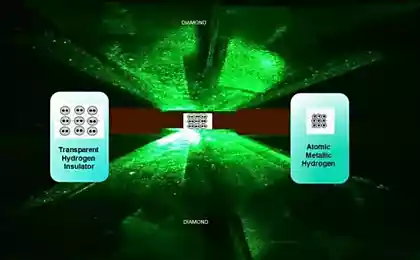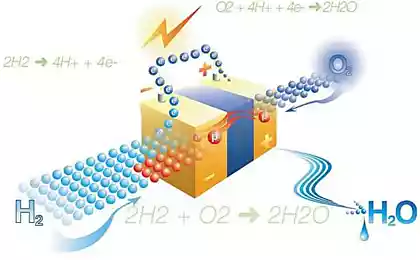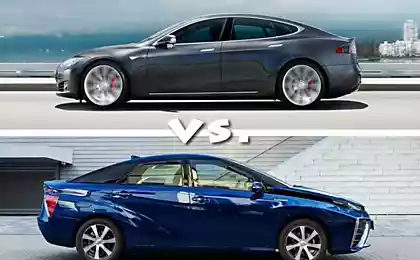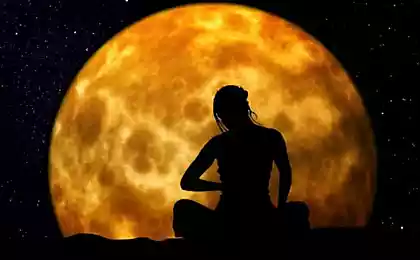758
Nanoceria for hydrogen
Breakthrough researchers from the school of Engineering of the University of California, San Diego may soon offer an environmentally friendly and very cheap method of producing hydrogen fuel free from carbon footprint – through the use of new tree-like nanostructures. Vertical tree structure, called "nanodrive", is used to maximize the capture of solar energy with the subsequent release of hydrogen.
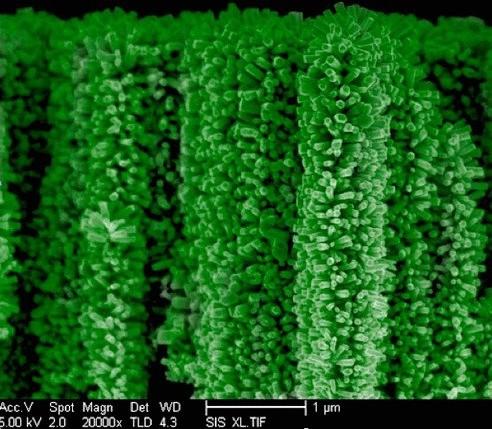
"Using structures of this type, based on our calculations, the soil for chemical reactions improves, at least 400 thousand times," said the PhD in electrical engineering Ke San, the head of research. In the study report, published in the journal Nanoscale, scientists say they have built a kind of forest of tiny ninterview that allow you to capture solar energy more efficiently, mimicking the method of energy absorption, which use real trees.
It is quite obvious that the inspiration for the team of scientists was the development related to artificial photosynthesis. The process of photosynthesis is that plants absorb the sunlight, at the same time collecting carbon dioxide and water from the atmosphere and then creating carbohydrates for nutrition and growth. Team Wang also hopes to use the mechanism of natural photosynthesis to capture carbon dioxide from the atmosphere and reduce greenhouse gases in the environment.

Most of the research in the field of hydrogen fuel is focused on replacing current technologies using fossil fuels, but using clean energy sources that do not have a by-product in the form of greenhouse gases. Development team van, the so-called "3D branched nonmassive" uses for hydrogen photoelectrochemical splitting of water based on sunlight.
The very idea of such a solar electrolysis is not new, but the main problem of the development of the past years was the high price of platinum catalysts required for the implementation of such chemical reactions. Previously, scientists had already developed some alternatives in this region starting from the idea of hydrogen production in solar collectors and to the potential use of cheaper Nickel and cobalt catalysts.
But the breakthrough group of van is in several innovations. First, the technology provides for the use of abundant sunlight, and catalysts of chemical reactions are cheap but promising silicon and zinc oxide. Secondly, the breakout also includes the above-described nanoscale structural changes in the mechanism of absorption of sunlight. This is the key factor in improving the efficiency of the process, as developed by scientists "nanoceria" are ideal for capturing maximum amount of sunlight.

As van said, the secret is that the tree structure truly absorb the sun's light while flat surfaces simply reflect it. He also added that the developed nanostructures resemble the cells of the retina in the human eye. It would seem that the logical solution, because one has only to look at pictures of Earth from space: the lightest space is a flat surface, oceans and deserts that reflect the most light, while areas planted with forests appear darker.
According to the researchers, the vertical three-dimensional nanostructure also allows to increase the hydrogen yield. Here is the analogy with boiling water: in a large pot of boiling water, the bubble must become very large to come out on a flat surface. In the case of nanostructures, the size of the bubble may be minimal, so the hydrogen is much faster. Moreover, the surface area for the extraction of hydrogen is increased to 400 thousand times.
Source: /users/104

"Using structures of this type, based on our calculations, the soil for chemical reactions improves, at least 400 thousand times," said the PhD in electrical engineering Ke San, the head of research. In the study report, published in the journal Nanoscale, scientists say they have built a kind of forest of tiny ninterview that allow you to capture solar energy more efficiently, mimicking the method of energy absorption, which use real trees.
It is quite obvious that the inspiration for the team of scientists was the development related to artificial photosynthesis. The process of photosynthesis is that plants absorb the sunlight, at the same time collecting carbon dioxide and water from the atmosphere and then creating carbohydrates for nutrition and growth. Team Wang also hopes to use the mechanism of natural photosynthesis to capture carbon dioxide from the atmosphere and reduce greenhouse gases in the environment.

Most of the research in the field of hydrogen fuel is focused on replacing current technologies using fossil fuels, but using clean energy sources that do not have a by-product in the form of greenhouse gases. Development team van, the so-called "3D branched nonmassive" uses for hydrogen photoelectrochemical splitting of water based on sunlight.
The very idea of such a solar electrolysis is not new, but the main problem of the development of the past years was the high price of platinum catalysts required for the implementation of such chemical reactions. Previously, scientists had already developed some alternatives in this region starting from the idea of hydrogen production in solar collectors and to the potential use of cheaper Nickel and cobalt catalysts.
But the breakthrough group of van is in several innovations. First, the technology provides for the use of abundant sunlight, and catalysts of chemical reactions are cheap but promising silicon and zinc oxide. Secondly, the breakout also includes the above-described nanoscale structural changes in the mechanism of absorption of sunlight. This is the key factor in improving the efficiency of the process, as developed by scientists "nanoceria" are ideal for capturing maximum amount of sunlight.

As van said, the secret is that the tree structure truly absorb the sun's light while flat surfaces simply reflect it. He also added that the developed nanostructures resemble the cells of the retina in the human eye. It would seem that the logical solution, because one has only to look at pictures of Earth from space: the lightest space is a flat surface, oceans and deserts that reflect the most light, while areas planted with forests appear darker.
According to the researchers, the vertical three-dimensional nanostructure also allows to increase the hydrogen yield. Here is the analogy with boiling water: in a large pot of boiling water, the bubble must become very large to come out on a flat surface. In the case of nanostructures, the size of the bubble may be minimal, so the hydrogen is much faster. Moreover, the surface area for the extraction of hydrogen is increased to 400 thousand times.
Source: /users/104

